The Apple HomePod is certainly a unique smart home hub. Its speakers are far superior to the ones you find in any other smart speaker. But is the Apple HomePod worth it?
The Apple HomePod is worth it only if you’re an avid Apple user. Otherwise, the HomePod is too expensive compared to other smart speakers. The only major advantage of the Apple HomePod is the sound quality. Its mini version is a better choice for the average Apple user.
This article will discuss everything you need to know about the Apple HomePod. Read it through and decide for yourself if the Apple HomePod will be your next smart home speaker.
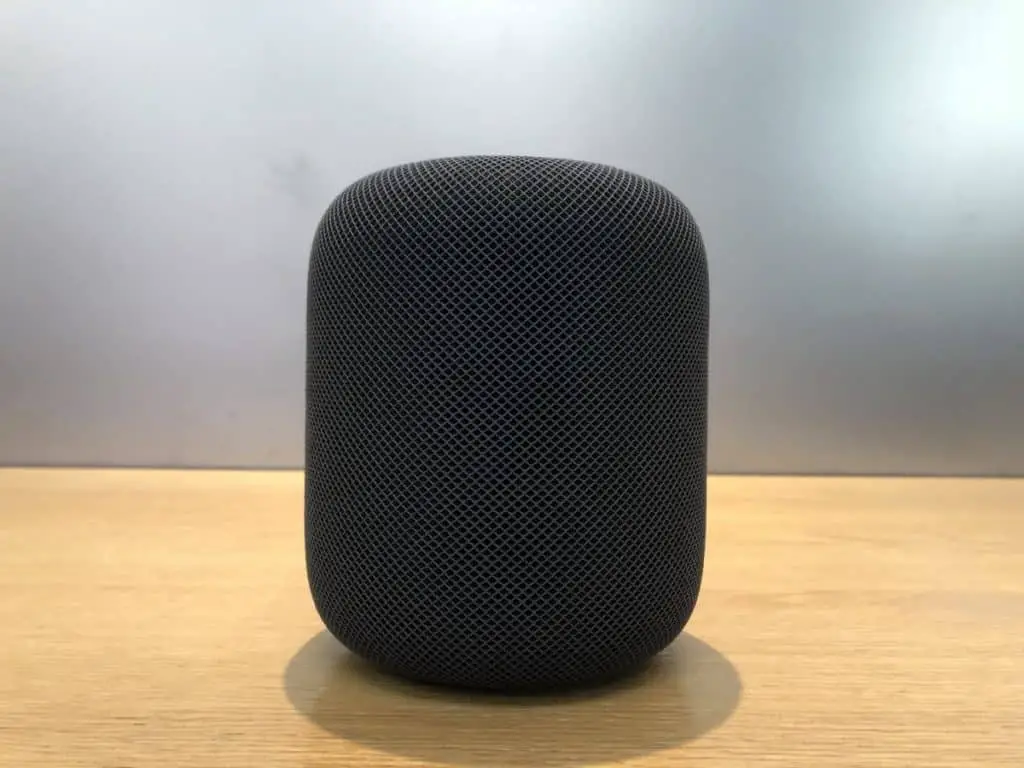
Pros of the Apple HomePod
- The mesh fabric design is both breathtaking and minimalist.
- It features high-quality hardware available only with Apple products.
- It comes in a small package of 7 beamforming tweeters and a large woofer with phenomenal sound quality.
- The Apple HomePod’s 6 microphones can hear you no matter where you are.
- Everyone in the family can use the Apple HomePod for personalized tasks, such as texting and calling.
- Like any other Apple product, it’s easy to pair and integrate with existing Apple devices.
- It supports hundreds of smart devices, thanks to HomeKit.
Cons of the Apple HomePod
- The price is too high for a smart home speaker.
- Availability is steadily becoming worse because the HomePod has been canceled.
- If a smart device isn’t compatible with HomeKit, it won’t work.
- Smart speakers from competitors, like the Amazon Echo and Google Nest, offer much better value.
- You can’t use it as a Bluetooth speaker.

Who Should Buy the Apple HomePod?
The Apple HomePod is probably the most expensive smart speaker on the market today. The price alone tells us that it’s not for everyone.
But what if money is no object to you?
The Apple HomePod is for everyone who owns multiple Apple devices. It’s the perfect speaker for a well-established Apple ecosystem. If you listen to Apple Music and Apple Podcasts all the time, it may be very well worth its price. It has perfect integration with these 1st-party services.
But if you use Spotify, Tidal, or YouTube Music, forget about it. It still might work, but you lose a ton of functionality.
Plus, all music plays on Apple Music by default. And you can’t change it to something else.
The Apple HomePod is often compared to its smaller brother, the HomePod mini. Again, there’s a reason why the HomePod is about 3 times the price.
And that reason is sound quality. The HomePod sounds amazing, featuring a woofer with surprisingly punchy bass. Plus, the tweeters reproduce great treble.
Vocals are crystal clear, essential for a smart speaker. Siri’s voice sounds so much better on the HomePod than on any other Apple device.
If you appreciate great sound quality, this speaker is for you. It’s not as good as a Hi-Fi home theater system, but that’s like comparing apples to oranges.
Take the HomePod’s size into account, and you’ll quickly realize what I’m talking about.
There are built-in sensors that scan the speaker’s surroundings. The speaker then adjusts its drivers to sound better.
I know this sounds like a gimmick, but it really isn’t. It works surprisingly well.
You should buy the Apple HomePod if you own several Apple devices, appreciate superior sound quality, and don’t mind the high cost. It’s also worth buying if you regularly listen to Apple Music and Apple Podcasts. For everyone else, the HomePod mini or an alternative speaker will do just fine.
Why the Apple HomePod Is Worth It
The HomePod has some great benefits, so many Apple users don’t mind getting it despite its high price compared to other smart speakers on the market. Let’s look at some of the reasons why it’s worth the price.
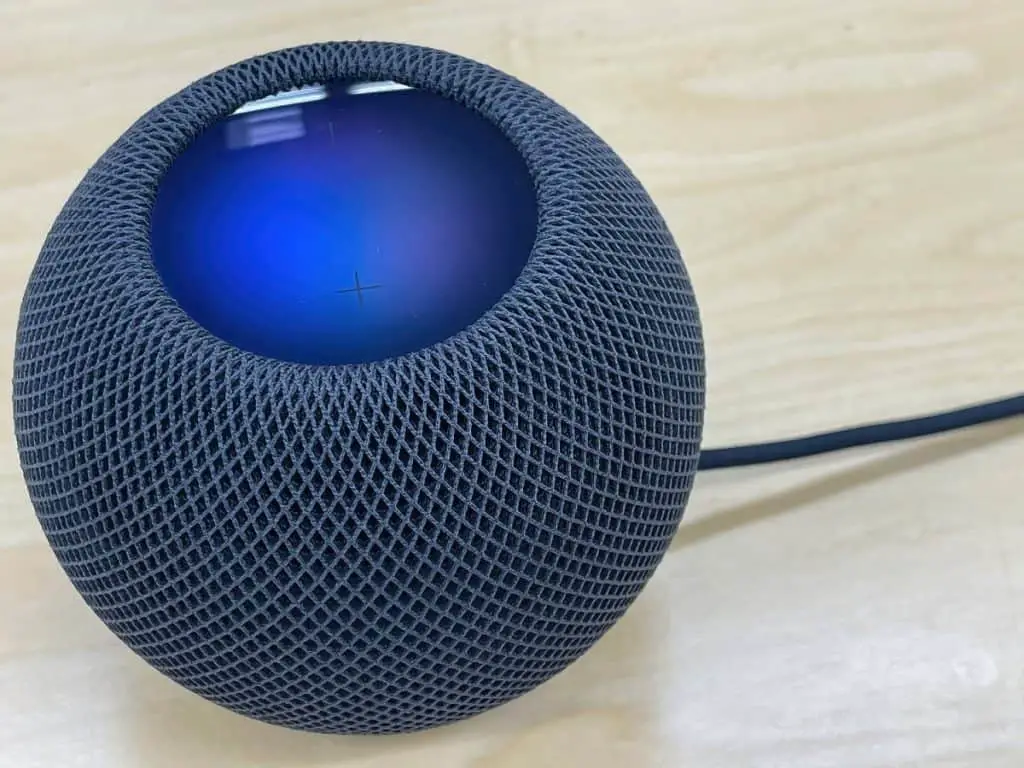
Apple HomePod Has a Stunning Design
Everything from the packaging to the device itself is breathtaking. The HomePod is a cylinder covered in fabric mesh, offering a premium and surprisingly soft touch.
Its top panel is black and made of glass. There’s an LED array that plays colorful animations to let you know when Siri is on.
There are also the plus and minus capacitive touch buttons that you use to adjust the volume.
You can get the HomePod in space gray or white.
Most people opt for the space gray variant because it collects less dust. It also blends in nicely with the background. But if you want the opposite effect, get the white one.
Sleek, modern, minimalist, gorgeous, and polished are a few words I’d use to describe the HomePod.
Apple HomePod Uses First-Class Hardware
You can recognize most Apple products by simply holding them in your hand. The HomePod is definitely one of them.
But you can’t even see the most impressive parts of the HomePod. Sure, the fabric mesh and the top glass panel feel high quality.
It’s the inside that counts. Watch this YouTube video about HomePod teardown by iFixit to see for yourself:
They conclude that the HomePod is “built like a tank.”
The actual drivers inside the speaker are impressive. Each driver has its own amplifier. That must be the reason why it sounds so good.
The Speaker Has an Incredible Sound Quality
We now come to the main advantage of the large HomePod. Every reviewer on the planet has said that it sounds better than other smart speakers.
But it’s not just the size. It sounds better even than the Google Nest Hub Max.
The New York Times wrote that “It only sounds great.” And it’s no surprise that the HomePod has the best sound quality.
The 7 tweeters and woofer are already enough to give the HomePod a massive competitive edge. Most other smart speakers have only a tiny driver.
The woofer helps the HomePod achieve a deep, punchy bass. Smaller speakers just can’t accomplish that. Drivers must be large to reproduce good bass.
As if that wasn’t enough, the HomePod takes its environment into consideration. It seems like only Apple takes acoustics seriously.
The countless hours spent testing the HomePod in different setups have paid off. It’ll sound good no matter where you put it.
I recommend putting it in the middle of the room if possible because that’s how you get the best and loudest sound. And it works better for Spatial Audio, too.
Apple added Spatial Audio just recently. It’s a feature that you can turn on to get a surround sound effect.
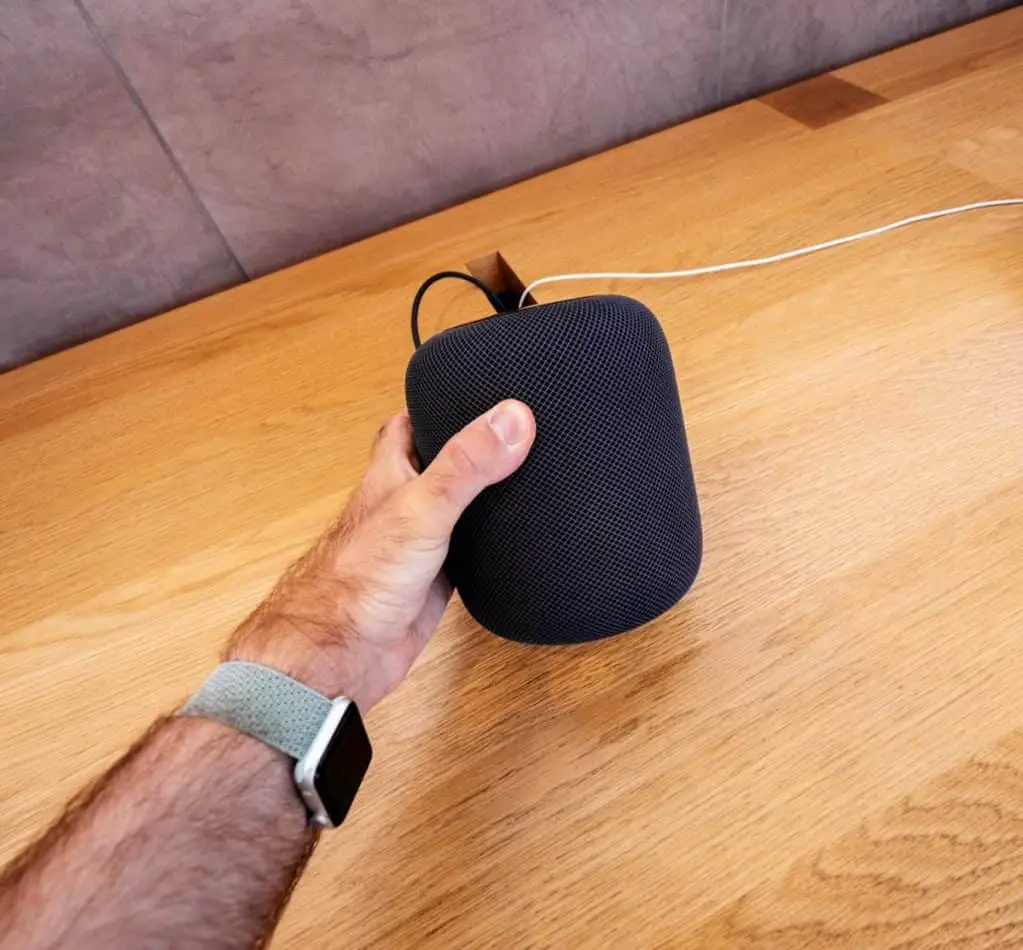
The HomePod Integrates With Other Apple Devices
We can’t talk about an Apple device without mentioning the ecosystem at least once. All Apple devices are designed to work with one another.
If you already have an iPhone, a Mac, and an iPad, then the HomePod could become the newest addition to your Apple family.
The way you connect the HomePod is one example. You plug the HomePod in, bring your iPhone close to it, and you get a prompt to add it.
That’s it! Other smart speakers take at least 10 to 15 minutes to set up, but not the HomePod. You can add it in 10 seconds!
Apple HomePod Features High-Quality Microphones
The HomePod has a 6-microphone array. They pick up sound from every side. You never have to worry about correctly placing the HomePod. It’ll always hear you.
The most important thing for a smart speaker is to hear you. Fortunately, the microphones in the HomePod are extremely sensitive.
You could be on the other side of the room, and the HomePod can still hear you!
This isn’t that important in your bedroom. But for the living room or even the hallway, it’s priceless.
Apple HomePod Supports Multiple Users
When the HomePod launched, one of the main complaints was that the device couldn’t tell the difference between voices.
This made for some very awkward messages and phone calls. Thankfully, Apple fixed all of this.
The HomePod now supports up to 6 users with voice recognition. It plays your music, sends messages from your account, and adds reminders to your iPhone.
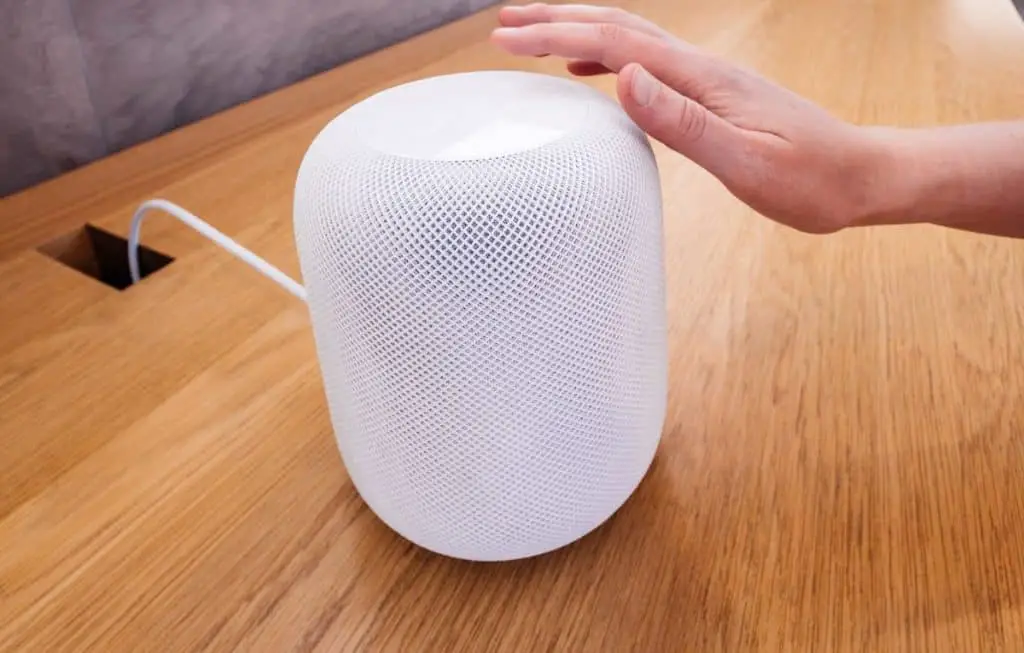
Apple HomePod Can Support Hundreds of Smart Gadgets
The HomePod is a HomeKit device. You might be surprised, but Apple works with dozens of partners to add HomeKit integration.
Brands like Logitech, Nanoleaf, Wemo, and ecobee all work with Apple HomeKit and Siri.
You can use the HomePod to control all of them and set up home automation on your iPhone or iPad. Also, all commands work on the HomePod.
You can look at Apple’s official website to check what accessories support HomeKit.
Note that there are plenty of others that aren’t mentioned here. Just look for ‘HomeKit,’ ‘Apple,’ and ‘Siri’ in the gadget’s description.
One of my favorites is the ONVIS Sensor (available on Amazon.com). It’s a multi-purpose motion sensor, hygrometer, humidity meter, thermometer, etc. Use it for home automation and monitoring.
Apple HomePod Downsides
You now know a few reasons why the HomePod is worth it. Here are a few reasons why it’s not:
Many People Think It’s Overpriced
The HomePod is a high-quality product, but there’s a reason why you don’t see them everywhere. That reason is the price.
Apple lowered the price since it launched back in 2018. But it’s still significantly more expensive than its main competitor, the Google Home Max.
It’s also way more expensive than any other smart speaker. You could get a whole 5.1 surround sound system for the same amount of money.
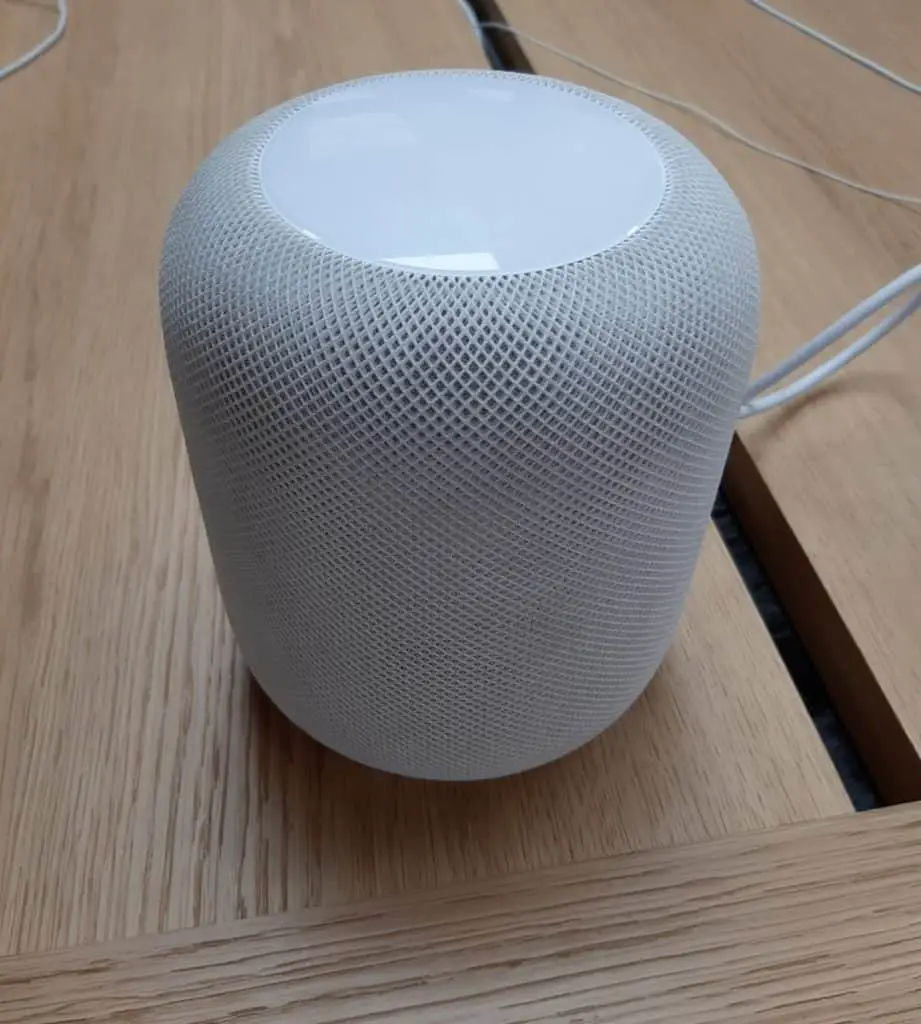
Apple Has Stopped Producing the HomePod
The Apple HomePod was originally available pretty much everywhere. You can still find it in stores. Because of its very high price, it’s not going to sell out anytime soon.
But Apple discontinued the HomePod in March 2021. They apparently did so to focus on the HomePod mini.
So, if you want to buy a HomePod, you better decide soon. It’s not going to be around for much longer.
It Doesn’t Support Many Devices
I mentioned that countless smart home gadgets work with the HomePod.
However, we have to acknowledge all those that don’t. And there are many.
For example, TP-Link’s Kasa gadgets won’t work with Siri. That’s a bummer because it somewhat limits your choice unless you use Homebridge.
You Can Use the Homebridge With the Apple HomePod
Thankfully, you can make pretty much any smart device compatible with HomePod. You just have to route it through Homebridge.
Homebridge recommends the Raspberry Pi to complete this project.
Watch this YouTube video by Rey G to see how to flash Homebridge to the Pi:
But this isn’t for everyone. It requires a lot of additional work. Devices from major brands like Ring and Kasa should work out of the box, but they don’t.
The Speaker Has To Compete With Better Alternatives
It’s hard to convince someone to buy any kind of device that costs as much as the HomePod, and even more so when you have incredible devices from other competitors for much less.
Even the cheaper HomePod Mini competes with the HomePod. You could get 3 minis for the cost of one HomePod instead and put them around your home.
There’s also Google Nest and Amazon Echo. Both solutions are a bit better if you’re not in the Apple ecosystem.
You Can’t Use It as a Bluetooth Speaker
The HomePod sounds great, and there’s no doubt about that. But what’s the point of having a good-sounding speaker if it doesn’t even have Bluetooth?
It also must be plugged into a socket. Furthermore, it doesn’t have any batteries, so you can’t use it as a portable speaker.
But they should’ve integrated Bluetooth at the very least. Both the Google Nest and Amazon Echo work as regular Bluetooth speakers.
If someone in your family doesn’t have an iPhone, the HomePod is pretty much useless to them.
You also need WiFi for the HomePod to even work. If you don’t have a stable Internet connection, that means no music for you.
Final Thoughts
The Apple HomePod is a well-built speaker, but it’s not for everyone. If you already own a few Apple devices, then it’s worth it.
The sound quality is great, and that’s the main reason why you should be buying the HomePod. The woofer and the 7 tweeters sound well-balanced, and the bass is very punchy.
And the microphone array will hear your commands no matter how far away you are.
If you want to get all the same functionality at a lower cost, get the HomePod mini instead.
